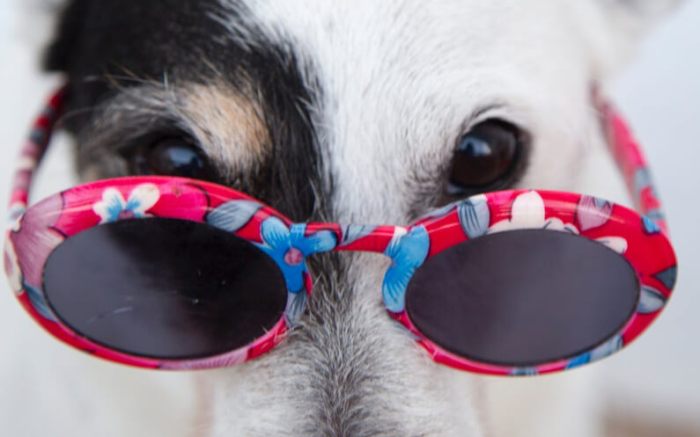
Guilty Dog Strikes Again: Unmasking the Truth Behind Canine Guilt
Guilty Dog Strikes Again: Have you ever caught your furry friend with their nose in the cookie jar, only to be met with a look of utter remorse? That “guilty dog” expression, with the downcast ears and sheepish gaze, can be incredibly convincing.
But does it truly reflect guilt, or is it something else entirely? This is a question that has puzzled dog owners for generations, leading to endless debates about canine emotions and their ability to feel remorse.
The concept of the “guilty dog” is deeply ingrained in our understanding of our canine companions. We often attribute their behavior to feelings of guilt, especially when they’ve been caught in the act of mischief. However, the reality might be more complex.
While dogs do exhibit certain behaviors that resemble guilt, the scientific evidence suggests that they may not be experiencing the same complex emotions as humans. This article delves into the fascinating world of canine behavior, exploring the common misinterpretations surrounding the “guilty dog” and the importance of understanding their true motivations.
Common Misinterpretations

It’s easy to assume a dog is feeling guilty when they exhibit certain behaviors, but often these actions are misinterpreted. Understanding the true meaning behind a dog’s actions is crucial for building a positive and trusting relationship.
Misinterpreting Body Language, Guilty dog strikes again
Dogs often display behaviors that can be mistaken for guilt, but are actually natural responses to stress or anxiety. For example, a dog might tuck their tail between their legs, avoid eye contact, or lick their lips when they feel threatened or uncertain.
These actions are not necessarily signs of guilt but rather attempts to appease or avoid conflict.
Differentiating True Guilt from Punishment Response
True guilt is a complex emotion that requires a sense of self-awareness and understanding of right and wrong. Dogs, while intelligent, don’t possess the same level of cognitive ability as humans. When a dog displays behaviors like hiding, cowering, or being submissive after being punished, it’s often a response to fear or anxiety, not true guilt.
They are simply trying to avoid further punishment.
The Role of Training and Communication: Guilty Dog Strikes Again

A common thread in understanding why dogs sometimes act out is the interplay between training and communication. Training, especially through positive reinforcement, helps dogs learn to respond appropriately to various situations, while effective communication fosters a clear understanding between dog owners and their canine companions.
Positive Reinforcement Training
Positive reinforcement training is a humane and effective method that uses rewards to encourage desired behaviors. By associating positive experiences with specific actions, dogs learn to repeat those actions. For example, rewarding a dog with a treat or praise for sitting on command reinforces the desired behavior.
This method helps dogs understand what is expected of them and reduces the likelihood of misinterpretations.
The Importance of Clear Communication
Dogs rely heavily on nonverbal cues and body language to understand their owners’ intentions. Misinterpretations often arise when these cues are unclear or inconsistent. For example, a dog might misinterpret a raised hand as a threat if it’s not used consistently as a signal to stop.
Effective Communication Techniques
Consistent Cues and Signals
Using consistent verbal cues and hand signals is crucial for clear communication. For example, always using the word “sit” accompanied by a downward hand gesture when asking your dog to sit will help it understand the command.
Body Language Awareness
Dogs are incredibly sensitive to subtle body language. It’s important to be aware of your own body language and how it might be interpreted by your dog. For example, avoid staring directly into your dog’s eyes for prolonged periods, as this can be perceived as a challenge.
Positive Reinforcement and Rewards
Using positive reinforcement techniques, such as treats, praise, or toys, helps dogs associate good behavior with positive experiences. This strengthens the bond between owner and dog and makes it more likely that the dog will understand and follow commands.
Observing Your Dog’s Behavior
Paying attention to your dog’s body language and behavior is essential for understanding its needs and intentions. Learning to recognize signs of stress, anxiety, or fear can help you avoid situations that might lead to misinterpretations.
The guilty dog strikes again! I swear, I just cleaned the kitchen floor, and now there’s a trail of muddy paw prints leading to the back door. I’m thinking of trying some new summer hairstyles that take only minutes to distract myself from the mess.
Maybe a messy bun will hide the stress lines I’m sure are forming on my forehead. Back to the dog. Looks like I’ll be giving him a bath later!
The guilty dog strikes again! I swear, he knows exactly what he did, but the big puppy eyes and wagging tail just melt my heart. Anyway, I’m off to brainstorm some gift ideas for my sister – she’s been hinting about needing some new things, and I think a little retail therapy will help her forget about my furry little criminal.
Maybe I’ll check out this gift guide for women for some inspiration. I’m sure I can find something she’ll love, and maybe even get her a new chew toy for the culprit so he can learn to leave my shoes alone!
The guilty dog strikes again! This time, he’s managed to get into the record collection and left a trail of chewed-up sleeves in his wake. I’m starting to think he has a vendetta against my vinyl. On the bright side, this incident has reminded me to check out this great post on vinyl , which has some fantastic tips on caring for your records.
Now, where did I put that dog-proof record player…?

